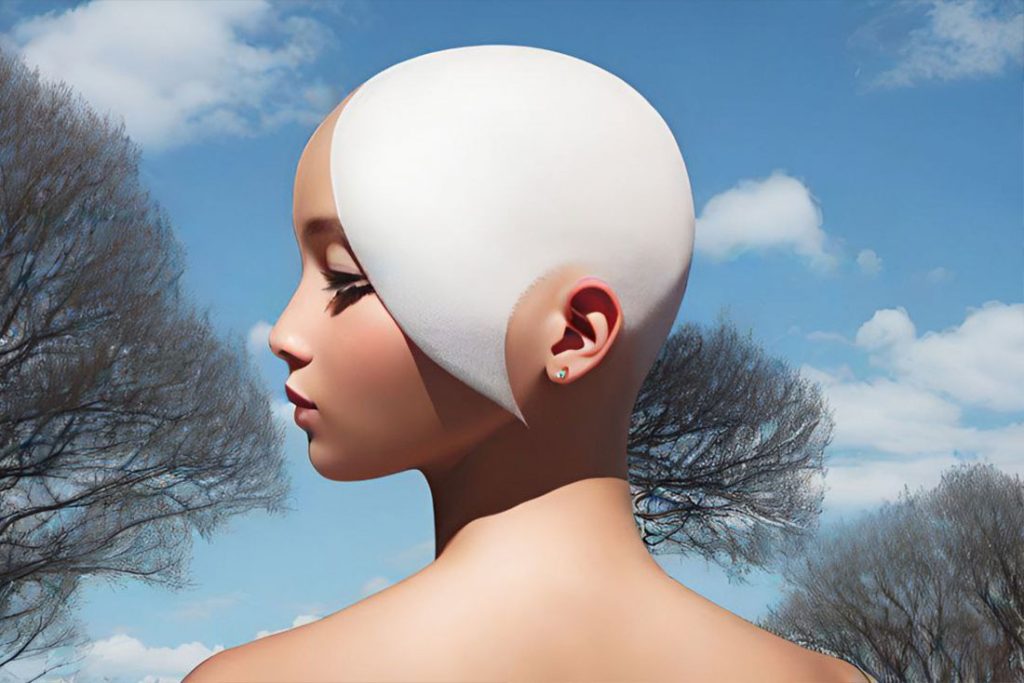Navigating Scalp Disorders: A Comprehensive Guide for Cosmetologists
A cosmetologist’s work goes beyond hairstyling and makeup application; it also involves recognizing various skin and scalp disorders that might not be readily apparent to clients. Scalp disorders like dandruff and dry scalp are particularly challenging since they often present with similar symptoms, such as flakiness and itching. This article delves into the intricacies of these conditions to equip cosmetologists with the knowledge required for effective consultation and guidance.

The Biology of Skin Renewal
The human skin, including the scalp, is in a perpetual state of renewal. Old skin cells are constantly being replaced by new ones, shedding as tiny, dry flakes. In a healthy scalp, this process occurs naturally, with minimal flakes visible to the naked eye. When this natural equilibrium is disturbed, conditions like dry scalp and dandruff may arise.
Dandruff Vs. Dry Scalp
Dandruff
Characteristics
Dandruff usually manifests as larger, more visible flakes and may often be accompanied by an oily scalp.
Causes
The causes of dandruff vary and may include an overgrowth of yeast-like fungus (Malassezia), seborrheic dermatitis, or even factors like stress and diet.
Treatment
Treating dandruff often involves antifungal shampoos or medicated treatments prescribed by a dermatologist.
Dry Scalp
Characteristics
Dry scalp, in contrast, usually presents with smaller, less noticeable flakes. Unlike dandruff, the scalp is not oily but may feel tight and irritated.
Causes
The root causes for a dry scalp can be quite diverse, including contact dermatitis, sunburn, or the natural aging process. Cold, dry climates can exacerbate the condition.
Treatment
Management involves moisturizing the scalp with oils or specially-formulated lotions and may involve treating the underlying cause, such as contact dermatitis, with prescription medications.
Distinguishing Between the Two
Given their similar presentations, how can one differentiate between dry scalp and dandruff? Here are some tips:
- Flake Size: Dandruff usually has larger, oilier flakes compared to the smaller, drier flakes seen in dry scalp.
- Scalp Texture: An oily scalp often indicates dandruff, whereas a tight, dry scalp usually suggests a dry scalp condition.
- External Factors: Consider external variables like recent sun exposure or the use of new hair care products, which might point to a dry scalp.
- Symptom Severity: Dandruff generally presents with more severe symptoms, including persistent itching and potentially red, inflamed areas on the scalp.
The Role of Cosmetologists
Cosmetologists can play a crucial role in:
- Early Identification: Observing signs during routine services and advising clients to seek medical advice if symptoms persist.
- Management: Recommending suitable hair care products designed for sensitive or problematic scalps.
- Education: Informing clients about how lifestyle factors like diet and stress can influence scalp health.
- Referrals: Cosmetologists are not healthcare providers. If a client exhibits severe symptoms, a referral to a dermatologist is essential for diagnosis and treatment.
Conclusion
Understanding scalp disorders is integral for cosmetologists, who are often the first to notice symptoms. By being knowledgeable about conditions like dry scalp and dandruff, cosmetologists can not only provide more personalized services but also help guide clients towards appropriate treatment options.
Disclaimer: This article is intended for informational purposes and should not be considered a substitute for professional medical advice. Always consult with a healthcare provider for diagnosis and treatment of any medical condition.
For more in-depth information, consult your healthcare provider or a certified dermatologist.






